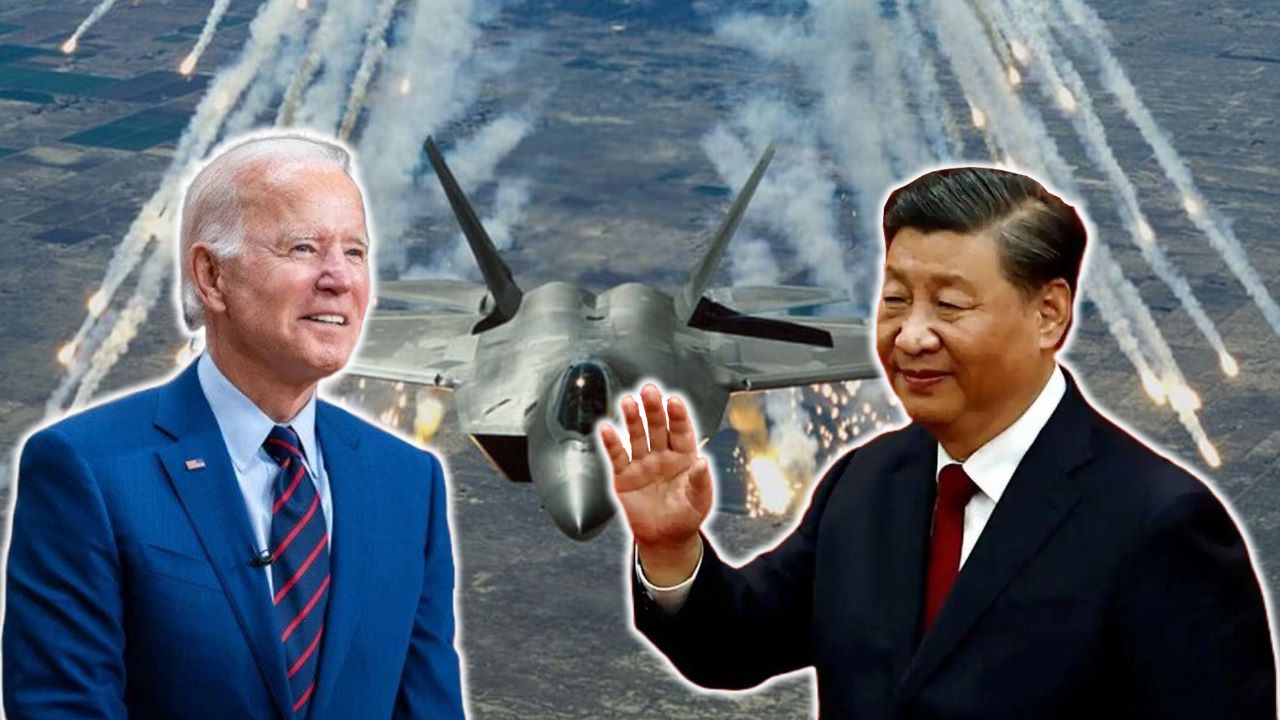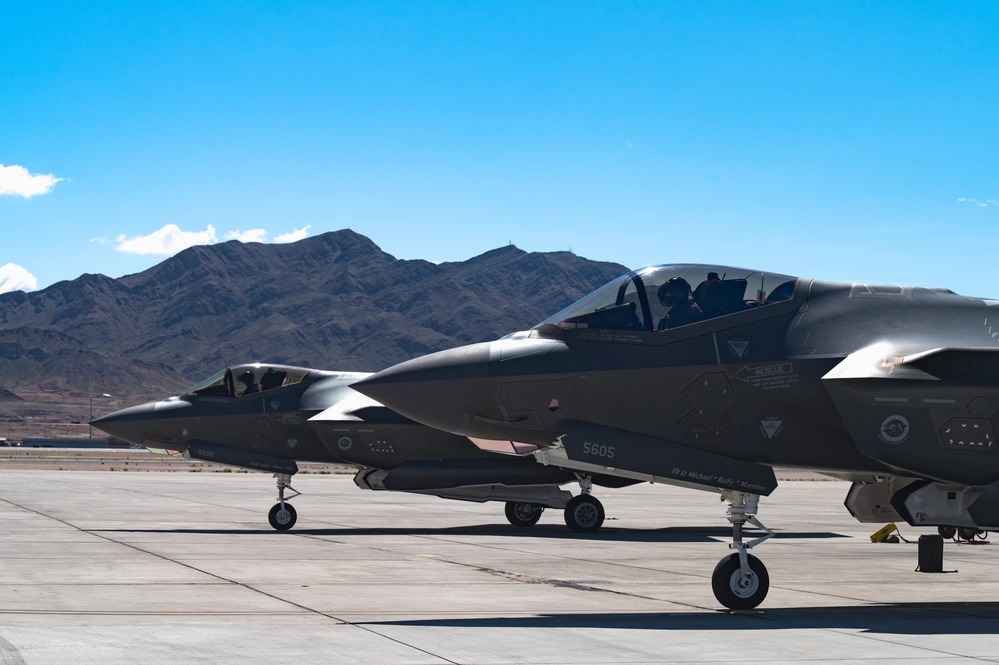If anything, U.S. Secretary of Defense Lloyd Austin hosting Japanese Defense Minister Minoru Kihara, Australian defense chief Richard Marles and Philippine Defense Secretary Gilberto Teodoro in Honolulu on May 3 reflected the American strategy to bring its regional allies and partners closer together in small groupings, or “minilaterals,” to build up what it calls “collective capacity” to push back against Chinese assertiveness in the Indo-Pacific.
Although “China” was not uttered by Austin and his guests, Beijing’s growing regional assertiveness was clearly at the top of their agenda.
Accordingly, they agreed on the need for deepening ties and building up interoperability among their forces through a series of bilateral, trilateral, and quadrilateral engagements. Here, the U.S., Japan, and Australia would provide greater security assistance to the Philippines, which is facing a hostile China in a territorial row.
In fact, by inviting the defense minister of the Philippines to the meeting, Austin seems to have indicated well enough that the growing proximity between Manila and Washington in security matters is the natural follow-up to Beijing’s claims virtually of the entirety of the strategic waterway of the Philippines in the South China Sea.
It may be noted that the Philippines had summoned China’s ambassador to Manila on April 25 to protest China’s use of water cannons against government ships on April 23 in the South China Sea, accusing Beijing of “harassment, ramming, swarming, shadowing and blocking, dangerous maneuvers, use of water cannons, and other aggressive actions.”
It is understandable, therefore, when Austin told a joint news conference following the talks that “We are clear-eyed about the challenges that exist throughout the region. We will need to continue to work together to increase interoperability to make sure that we share information, share intelligence”. He then added, “I think that is the way that you promote security instability. But that is why we’re here, because we share a common vision.”

The U.S. and the Philippines do have a Mutual Defense Treaty, and Austin reiterated Washington’s commitment to the treaty remains “ironclad.” However, by involving his counterparts from Japan and Australia in talks with the Philippine defense minister, Austin seems to have emphasized the need for a collaborative approach with the two principal allies of the U.S. in the Indo-Pacific – Japan and Australia.
It also reaffirmed its commitment to “ASEAN centrality and unity as well as ASEAN-led regional architecture” for “a peaceful, secure, and prosperous Southeast Asia, where sovereignty is respected, international law is followed, and nations can make decisions free from coercion.”
The significant point to note here is that the meeting with the Philippine defense minister was preceded by the formal “Trilateral Defense Ministerial Meeting,” the 13th in the series, of the three defense leaders of the U.S., Japan, and Australia. If one goes by the official statement of this meeting, as released by the U.S. Department of Defense, some important points are particularly noteworthy.
First, they all agreed on the dangers in the Indo-Pacific emanating from China’s territorial claims in the East-China and South-China Seas that are inconsistent with international law, including the United Nations Convention on the Law of the Sea (UNCLOS); Chinese threats to Taiwan and North Korea’s nuclear and missile proliferation.
Second, the ministers welcomed the U.S. Coast Guard’s deployment of the Harriet Lane Cutter in its inaugural Operation Blue Pacific patrol in Oceania in early 2024. This deployment offered opportunities for the U.S. Coast Guard to work alongside Pacific Island countries to share best practices on maritime domain awareness and support efforts led regionally by the Forum Fisheries Agency to combat illegal, unreported, and unregulated fishing activities.
Third, they noted the progress made by Japan in introducing counter-strike capabilities and investment in long-range strike capabilities by Australia. They confirmed that Australia and Japan would work closely together with the United States. In this context, they explored the cooperation of Japan and the possible cooperation of South Korea to implement the AUKUS signed by Australia, the United Kingdom, and the United States.
Recognizing Japan’s strengths and its close bilateral defense partnerships with all three AUKUS countries, the three ministers acknowledged that AUKUS partners are considering cooperation with Japan on AUKUS Pillar II advanced capability projects.
In this context, the three defense ministers welcomed the August 2023 entry into force of the Japan-Australia Reciprocal Access Agreement (RAA), which will enable deeper trilateral cooperation and enhance interoperability by facilitating Australian Defence Force presence alongside the United States Forces in Japan and Japanese Self-Defense Forces alongside the United States Forces in Australia.

Incidentally, there have been reciprocal deployments of Japan’s F-35A aircraft to Australia and Australia’s F-35A aircraft to Japan in 2023 as the first cooperative activities under the RAA. And activities are planned for trilateral F-35 joint training in 2025 and 2026.
So far, there has been progress on trilateral training using ranges in Australia and the successful conduct of Japan’s first anti-air and anti-ship missile launch in Australia in 2023.
Fourth, the U.S., Japan, and Australia would develop a networked air defense architecture to counter growing air and missile threats in the Indo-Pacific region, including broadening missile defense information sharing and incorporating future capabilities. They announced their intent for the U.S. Armed Forces, Australian Defence Force, and Japan Self-Defense Forces to conduct an inaugural regional air and missile defense live fire exercise in 2027 at Exercise TALISMAN SABRE.
The other Trilateral Activities and Exercises would include:
- Conducting trilateral F-35 Joint Strike Fighter training in all three countries in the next two years, including exercises such as Exercise COPE NORTH 2025 – United States; Exercise BUSHIDO GUARDIAN 2025 – Japan; and Exercise PITCH BLACK 2026 – Australia.
- Increasing the frequency and complexity of high-end trilateral exercises in northern Australia, such as Exercise SOUTHERN JACKAROO.
- Regularizing Asset Protection Missions for the U.S. Forces and the Australian Defence Force by Japan Self-Defense Forces and transits by Australia, Japan, the United States, and other partners.
- Accelerating and deepening trilateral information-sharing and ISR cooperation.
Fifth, the three defense ministers signed the trilateral Research, Development, Test, and Evaluation (RDT&E) Projects Arrangement. Science and technology cooperation is vital to maintain their collective edge and deepen their defense cooperation. This “landmark arrangement” allows the respective defense organizations to pursue areas of interest for “operationally relevant advanced collaboration.”
Through this arrangement, the ministries will further discuss cooperative opportunities in the areas of collaborative combat aircraft, autonomous systems, and composite aerospace materials.
This will boost, among others, strategic capabilities cooperation across multiple domains, including the conduct of an inaugural joint and combined live-fire air and missile defense exercise in 2027 at Exercise TALISMAN SABRE.
Significantly, the U.S., Japan, and Australia have brought out their latest strategic visions. Eurasian Times has already discussed these new or revised visions of Japan.
On April 17, Australia unveiled its National Defence Strategy (NDS) and 2024 Integrated Investment Program (IIP). It sets out Canberra’s strategic framework to guide the significant and urgent changes required “to transform Defence’s capability, force posture, force structure, acquisition, recruitment, and international engagement.”
The “cornerstone” of this strategy is said to be the “Strategy of Denial.” This approach aims to deter any conflict before it begins, prevent any potential adversary from succeeding in coercing Australia through force, support regional security and prosperity, and uphold a favorable regional strategic balance.
The NDS clearly states that in the context of the continuing deterioration of the strategic environment and the “competition [that] is playing out in military and non-military ways,” apart from the U.S., which is Australia’s “closest ally and principal strategic partner,” Canberra should “work with other key partners – notably New Zealand, Japan, our partners in Southeast Asia and the Pacific family, the Republic of Korea, India as well as the U.K. and other European nations – that share our concerns.”
In sum, coordination of capacity-building engagements among all the key countries in the Indo-Pacific as partners is increasingly becoming the theme to fight against the perceived Chinese hegemony.
- Author and veteran journalist Prakash Nanda is Chairman of the Editorial Board – EurAsian Times and has commented on politics, foreign policy, and strategic affairs for nearly three decades. A former National Fellow of the Indian Council for Historical Research and recipient of the Seoul Peace Prize Scholarship, he is also a Distinguished Fellow at the Institute of Peace and Conflict Studies.
- CONTACT: prakash.nanda (at) hotmail.com
- Follow EurAsian Times on Google News




